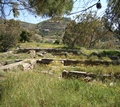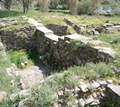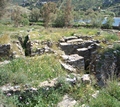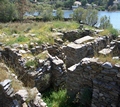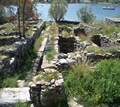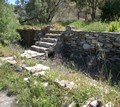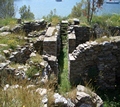
The peninsula of Agia Irini, named after the small church located in its center, is located inside the natural bay of Agios Nikolaos, in the northwestern part of the island, well protected from the north winds of the Aegean. On this peninsula, one of the most important prehistoric Aegean settlements came to light, founded during the final Neolithic period (3300/3200 BC) and continued to be inhabited until the end of the Late Bronze Age (1200/1100 BC) .). In some parts of the settlement, the habitation continued until the Hellenistic times (3rd-2nd century BC).
The houses of the settlement had undergone continuous reconstructions and interventions, which seem to have been done after disasters caused by natural phenomena. The architectural remains of the older periods were used by the following inhabitants, so it is difficult to detect the chronological relevance.
Few. are the architectural remains of the Early Bronze Age (3200/3000-2000 BC) but from this period comes a significant number of clay and stone vessels, as well as Cycladic marble figurines.
During the Middle Bronze Age (2000/1900-1600 BC) the settlement expanded and the large fortified enclosure of the peninsula with rectangular towers and a central gate was built. In the same period, the first construction phase of the temple, a building with a sacred character, unique in the Cyclades in this period, was also put in place. Special mention should be made of the unique, to date, set of fifty clay female figurines, some of large size, which came to light in the area of the temple. The figurines, interpreted as deities, priestesses or worshipers, are prominently displayed in the museum of the chora, Ioulida. In the same period, the network of commercial and cultural contacts and exchanges between the Cyclades and Crete is formed
During the Late Bronze Age (1600-1200/1100 BC) the settlement acquired a sophisticated layout with paved roads, water and drainage system. The inhabitants are engaged in agriculture, animal husbandry, fishing, hunting, pottery, weaving, metalwork, metallurgy and stonework.
Editor: Fotini Anastasopoulou










